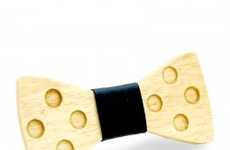
3D Printed Items are Changing the Way Bones are Healed
Laura McQuarrie — July 2, 2013 — Tech
References: jakevilldesign.dunked & dezeen
3D printed items have already revolutionized the manufacturing industry and have huge implications for healthcare as well. The astonishing technology is capable of making prosthetics and organs. Inspired by this technology's ability to make custom-fitted objects, Jake Evill created the 'Cortex 3D cast.'
The cast is created from a scan of a patients skin and bones, creating the optimal form for healing, "with denser support focussed around the fracture itself."
Currently, 3D printing is time consuming and takes three hours to complete a cast, as compared to a traditional plaster cast that can be applied in minutes. However, one advantage to 3D-printed casts is that they can be completely recycled after the wearer's bones are healed.
The cast is created from a scan of a patients skin and bones, creating the optimal form for healing, "with denser support focussed around the fracture itself."
Currently, 3D printing is time consuming and takes three hours to complete a cast, as compared to a traditional plaster cast that can be applied in minutes. However, one advantage to 3D-printed casts is that they can be completely recycled after the wearer's bones are healed.
Trend Themes
1. Custom-fitted Objects - Disruptive innovation opportunity: Develop new applications for 3D printing technology to create custom-fitted items in various industries.
2. Medical 3D Printing - Disruptive innovation opportunity: Explore the use of 3D printing for medical applications, such as prosthetics and organ manufacturing, to revolutionize healthcare.
3. Efficient and Sustainable Manufacturing - Disruptive innovation opportunity: Optimize 3D printing processes to reduce production time and create environmentally-friendly, recyclable products.
Industry Implications
1. Manufacturing - Disruptive innovation opportunity: Integrate 3D printing technology into the manufacturing industry to enable efficient and customizable production.
2. Healthcare - Disruptive innovation opportunity: Apply 3D printing in the healthcare sector to revolutionize medical treatments and improve patient care.
3. Recycling - Disruptive innovation opportunity: Develop recycling systems and processes for 3D printed products to promote sustainability and reduce waste.
6.8
Score
Popularity
Activity
Freshness























